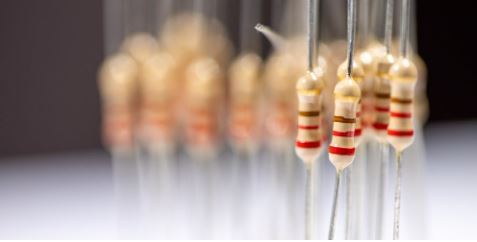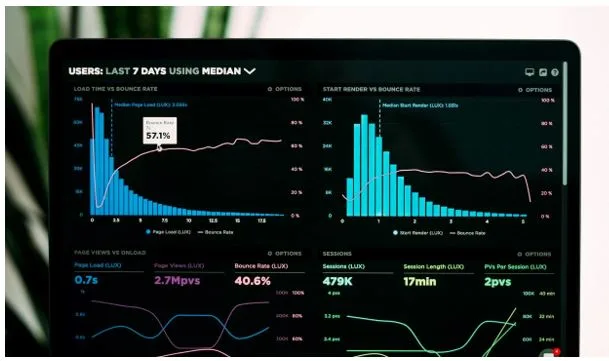5 Key Signs to Identify Counterfeit Electronic Components
Counterfeit electronics are a growing problem in the electronics industry. If you work with a PCB manufacturer, handle PCB manufacturing assembly, or source parts for PCB production in the USA, you need to know how to spot fake parts before they cause trouble. Counterfeit components can lead to device failures, safety risks, and significant financial losses. In this guide, you’ll learn five key signs to help you identify counterfeit electronic components and protect your projects.
Why You Need to Spot Counterfeit Components
Counterfeit components are fake or altered parts made to look like the real thing. They may not work as expected, or they may fail quickly. Using counterfeit electronics in your PCB manufacturing assembly can cause the following:
- Product recalls
- Safety hazards
- Damaged reputation
- Costly repairs
Knowing what to look for helps you avoid these problems and keep your products safe and reliable.
1. Visual Inspection: Check for Marking and Surface Issues
The first step in spotting counterfeit components is a careful visual check. Real parts have clear, sharp markings and a smooth, consistent surface. Here’s what you should look for:
- Incorrect or fuzzy logos: Counterfeiters often get the brand logo wrong or use a different font.
- Misspelled words or wrong part numbers: Errors in text are a big red flag.
- Uneven or rough surface: Some fakes use a process called “blacktopping,” where a layer of black epoxy covers old markings. This can leave the surface rough or uneven.
- Mismatched textures: The top and bottom of the part should have the same texture. If they don’t, it may be a sign of tampering.
- Strange mold marks or scratches: Authentic parts usually have smooth mold marks. Grainy or contaminated marks can mean the part was altered.
Always compare parts to a known genuine sample if you can.
2. Poor Quality Leads and Contacts
Look closely at the pins or leads on the component. Authentic parts from a trusted PCB manufacturer have clean, straight, and evenly spaced leads. Watch out for:
- Bent or damaged leads: This might mean the part was removed from another device and resold.
- Re-tinning or re-balling: Some counterfeiters try to make old leads look new by adding fresh solder. Look for uneven plating, odd colors, or signs of extra solder.
- Corrosion or contamination: Dirty or corroded leads are a warning sign that the part may not be new or genuine.
- Missing copper at the tips: If you don’t see the usual copper at the end of a lead, the part may have been reworked.
Checking the condition of leads and contacts is a simple but powerful way to spot fakes.
3. Inconsistent Dimensions and Weight
Counterfeit components often don’t match the exact size or weight of the real thing. Use a micrometer or caliper to check the part’s measurements against the datasheet. Look for:
- Thickness or length that doesn’t match the datasheet: Even a slight difference can mean the part is fake.
- Odd weight: If the part feels lighter or heavier than it should, it may have been filled with different materials or hollowed out.
- Irregular shapes: Rounded corners, uneven edges, or other shape issues can be a sign of sandblasting or other tampering.
Authentic parts from PCB Production USA will always match their datasheet specs.
4. Suspicious Markings and Blacktopping
Markings on genuine components are permanent and high quality. Counterfeiters sometimes use black ink or epoxy to cover old markings and add new ones. Here’s how to spot this:
- Acetone test: Gently rub the surface with a cotton swab dipped in acetone. If the ink or coating comes off, it’s likely a fake.
- Irregular or faded markings: Look for differences in font, size, or alignment. Poorly done markings often stand out.
- Visible old markings: Sometimes, you can see traces of the original marking under the new one.
If you see any of these signs, the component may be counterfeit.
5. Failed Electrical or X-ray Testing
Even if a part looks good, it might still be fake. Electrical and X-ray tests can reveal hidden problems:
- Electrical testing: Check resistance, capacitance, and other values to see if they match the specs. Fake parts often fail these tests or behave differently from real ones.
- X-ray inspection: X-rays can show if the inside of the part matches the real thing. Counterfeit parts may have missing or wrong internal structures.
- RoHS compliance: Some fakes claim to be RoHS-compliant but contain banned substances. X-ray fluorescence (XRF) can be checked for lead or other materials.
Your PCB manufacturing assembly partner or a trusted test lab can help with these checks.
Quick Reference for Spotting Counterfeit Components
| Sign | What to Look For | Why It Matters |
| Marking & Surface | Fuzzy text, wrong logo, rough surface, blacktopping | Signs of tampering or fake part |
| Leads & Contacts | Bent, re-tinned, corroded, uneven leads | May be used or altered parts |
| Dimensions & Weight | Size/weight doesn’t match datasheet | Indicates non-genuine part |
| Marking Quality | Faded, irregular, acetone-removable markings | Poor quality, possible blacktopping |
| Electrical/X-ray Test | Fails function or X-ray check | Hidden defects or fake inside |
How to Protect Yourself from Counterfeit Components
Now that you know the signs, here are some steps to help you avoid counterfeit electronics:
- Buy from trusted sources: Always use approved distributors or direct from the manufacturer for your PCB production USA needs.
- Inspect on arrival: Check every shipment for the signs listed above.
- Document everything: Keep records of part numbers, suppliers, and test results.
- Work with reliable partners: Choose a PCB manufacturer and PCB manufacturing assembly provider with a strong reputation for quality.
- Test before use: Use electrical and X-ray tests on suspicious parts.
Frequently Asked Questions (FAQs)
Q1: What are counterfeit electronic components?
Counterfeit components are fake, altered, or recycled parts sold as new. They may not work or may fail early.
Q2: Why are counterfeit electronics dangerous?
They can cause device failures, safety risks, and financial loss. They may also break compliance rules.
Q3: How do I know if a part is counterfeit?
Check for marking issues, poor leads, size differences, suspicious coatings, and failed tests.
Q4: What should I do if I find counterfeit components?
Stop using them, contact your supplier, and report the problem. Never use suspicious parts in your products.
Q5: How can I avoid counterfeit parts in PCB manufacturing assembly?
Buy from trusted sources, inspect all parts, keep good records, and work with a reliable PCB manufacturer.
Final Thoughts
Counterfeit components are a real threat to your business and your products. By learning the five key signs, visual flaws, poor leads, wrong size, suspicious markings, and failed tests, you can spot fake parts before they cause problems. Always work with a trusted PCB manufacturer and use reliable PCB manufacturing assembly services for your PCB production USA needs. Careful inspection and good habits will keep your electronics safe, reliable, and ready for success.




